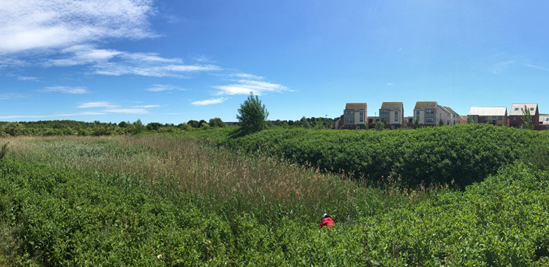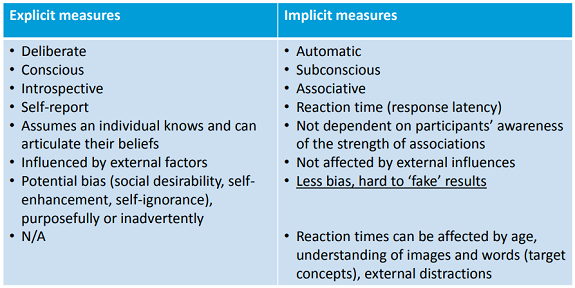
July 2, 2019, by Blue-Green team
Assessing subconscious (implicit) perceptions of Blue-Green infrastructure
Behaviour has been shown to be predicted by a combination of implicit (subconscious) and explicit (conscious) attitudes and perceptions. Explicit perceptions can be captured through techniques such as questionnaires, interviews, and stated preference tests, that ask respondents to report their attitudes and beliefs. But how can we measure our implicit perceptions, those that are rooted in our subconscious and outside of conscious awareness and control? Emily O’Donnell introduces the Implicit Association Test (IAT) as a novel technique to determine subconscious perceptions.
Understanding public attitudes towards Blue-Green infrastructure
To date there are relatively few academic studies of the public perceptions of Blue-Green infrastructure and SuDS (Sustainable Drainage Systems), all of which have used explicit measures to collect data. As an example, my colleagues on the Blue-Green Cities research project investigated the public perceptions of Portland’s (Oregon, USA) bioswales (Everett et al., 2018). They found that bioswales were generally regarded as aesthetically-pleasing but residents were concerned over ‘mess’ and littering, typically influenced by site-specific physical characteristics especially plant choice and maintenance regime (Figure 2). Concerns over the health and safety risk of SuDS, especially those with open water, have also been raised (Bastien et al., 2012), yet views of open water are highly valued with regards to aesthetics. We are interested to see if implicit perceptions can help explain these conflicting attitudes.

Figure 1. Portland’s bioswales – rich in biodiversity and attractive or unsafe and messy?
The Implicit Association Test (IAT)
The IAT is a social-psychology tool that may overcome some of the issues with explicit tests, particularly issues of social desirability bias where we report that we ‘like’ all greenspace and environmental initiatives as we think that this is more socially acceptable. IATs can also highlight attitudes that people were not aware that they had. IATs have been used in investigations of perceived environmental hazards such as nuclear power (Truelove et al., 2014) and climate change (Beattie and McGuire 2012). Table 1 highlights the key differences between explicit and implicit measures.

Table 1. Characteristics of explicit and implicit measures to determine preferences.
How Implicit Association Tests work
Implicit attitudes are calculated by measuring the strength of associations between target concepts (e.g. flower or insect) and attributes (e.g. positive and negative words). Participants are asked to complete several trials on a computer or tablet. During each trial, they will make pairings between images/words of flowers and insects, and good and bad words (the idea being that flowers are viewed positively and insects are viewed negatively). The test argues that an implicit preference is shown if the participants finds it easier (i.e. respond faster) to make certain associations (such as those between positive words and flowers).
Using the IAT in the Blue-Green Futures project
IATs have had little application in water management research to date. We are currently developing an online IAT to investigate implicit perceptions of Blue-Green infrastructure (e.g. bioswales, rain gardens, green roofs) vs. Grey infrastructure (e.g. pipes, storm drains, culverts). These will be completed by respondents in our four case study cities, so in order to reduce any language issues we are actually creating four online IATs – UK English, US English (subtle differences between UK and US English that may affect response times, e.g. ‘grey’ vs. ‘gray’, ‘green roof’ vs. ‘eco-roof’), Dutch and Chinese. We hope to establish if there are implicit attitudes to Blue-Green infrastructure that people might explicitly reject because they conflict with accepted values or beliefs. We plan to launch our online IATs in July.
If you are interested in the IAT approach then have a look at the Project Implicit website. There is a lot of information about this technique and the opportunity to complete IATs on a range of topics, e.g. age, gender-science, weapons and US presidential popularity.
No comments yet, fill out a comment to be the first

Leave a Reply